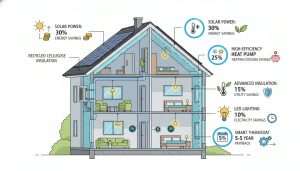What’s a bridge loan and how does it affect closing?
Can a bridge loan save your closing — or break it? Here’s the truth about bridge financing and closing timelines.
Why this matters: bridge loans let buyers move fast when timing is tight. Used right, they keep deals alive. Used wrong, they create delays and extra cost. Tony Sousa, a top local realtor, guides dozens of buyers through bridge financing every year. Below is a clear, no-nonsense guide to what a bridge loan is, how it affects your closing, and how to avoid mistakes.
What is a bridge loan?
A bridge loan (bridge financing) is a short-term loan that fills the gap between buying a new home and selling your current one. It’s typically interest-only, lasts weeks to months, and uses your current home or the new purchase as collateral.
Keywords: bridge loan, bridge financing, short-term loan, home purchase.
How a bridge loan works
- Lender gives temporary funds so you can close on the new property before selling the old one.
- You make interest-only payments while you own both properties.
- Once your old home sells, the bridge loan is paid off and replaced by a mortgage or cash.
This loan speeds up the transaction when closing dates don’t line up.

Benefits of bridge financing
- Faster closings: You don’t need to wait to sell to buy.
- Competitive offers: Sellers prefer buyers who can close quickly.
- Avoid contingency fallout: You can remove sale-contingent clauses and strengthen your offer.
Keywords: closing timeline, fast closing, competitive offer, sale contingency.
Risks and costs
- Higher interest rates than standard mortgages.
- Additional fees and lender requirements.
- Carrying two properties increases monthly payments and financial strain.
- If your home takes longer to sell, the loan cost grows.
Mitigate risk by confirming realistic sale timelines and having reserves.
How a bridge loan affects the closing timeline
- Speeds closing on the purchase side immediately.
- Adds extra lender steps: application, appraisal of one or both properties, and underwriting for short-term financing.
- If documents or appraisals lag, the bridge loan can delay closing rather than accelerate it.
Real-world timeline: without a bridge loan closing might wait 30–90 days for a sale. With a bridge loan, purchase closing can happen in 7–21 days, but expect an extra week for bridge lender processing.
Practical tips to protect your closing
- Work with a realtor experienced in bridge financing and fast closings.
- Pre-qualify for bridge financing before making an offer.
- Get clear terms: fees, interest rate, repayment deadline.
- Have a plan B: contingency funds or interim mortgage options.

Conclusion and next step
A bridge loan can be the difference between landing your dream home and losing it. It shifts closing timelines in your favor but comes with higher costs and extra steps. Use it only with a clear sell plan and professional support.
For trusted, local guidance on bridge loans and closing strategy, contact Tony Sousa — he’s helped many buyers navigate bridge financing successfully.
Tony Sousa — Local Realtor
Email: tony@sousasells.ca | Phone: 416-477-2620
Website: https://www.sousasells.ca
Keywords included: bridge loan, bridge financing, closing, closing timeline, mortgage, home purchase, real estate.





















